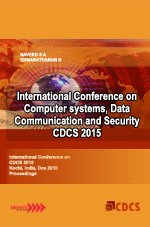Energy Efficient Modeling of MIMO-OFDM in 4G Networks
Conference: International Conference on Computer Systems, Data Communication and Security
AbstractWith the ubiquitous proliferation of mobile broadband and its widespread usage, the energy consumption of mobile devices has increased tenfold times as compared to a decade ago. It is a well-known fact that the mobile communication capability has escalated, and its service provisioning is approaching those achieved by fixed line connections. Driven by the demand to cater to the upwardly mobile user and a desire to outcompete current service providers, the mobile industry is surging ahead with an exponential pace leveraging new technologies and applications. However, this race for envisioning the communication paradigm has taken its toll on the environment with excessive greenhouse gas emission, due to enormous energy expended by the mobile networks. With almost half of the globe population consuming mobile services, it is imperative to leverage such technologies that optimize the Energy Efficiency of mobile networks. 3GPP Release 10 provided a framework for the LTE-Advanced standard, targeted to fulfill as well as exceed the requirements of IMT-Advanced defined by ITU. LTE-Advanced has evolved from LTE and is backward compatible with legacy systems. Coupled with the ability to use a maximum bandwidth of 100 MHz along with scalable OFDM as the multiple access technology, LTE has emerged as the fastest growing mobile standard. Also, the LTE-Advanced networks deploy Carrier aggregation, Advanced MIMO technologies, support of Het-Nets and Coordinated multipoints for cell edge users, to achieve the target specifications of IMT-Advanced. MIMOOFDM is the air interface of choice for 4G Networks. This paper highlights the key technologies in LTE-Advanced framed in 3GPP Release 12, which attempt to reduce energy consumption, ushering LTE towards Green Communication, an environment-friendly paradigm. An Energy Efficient model of MIMO-OFDM is proposed to advocate the role of this technology to boost Energy Efficiency in Wireless Networks. |
CDCS - 2015
|
